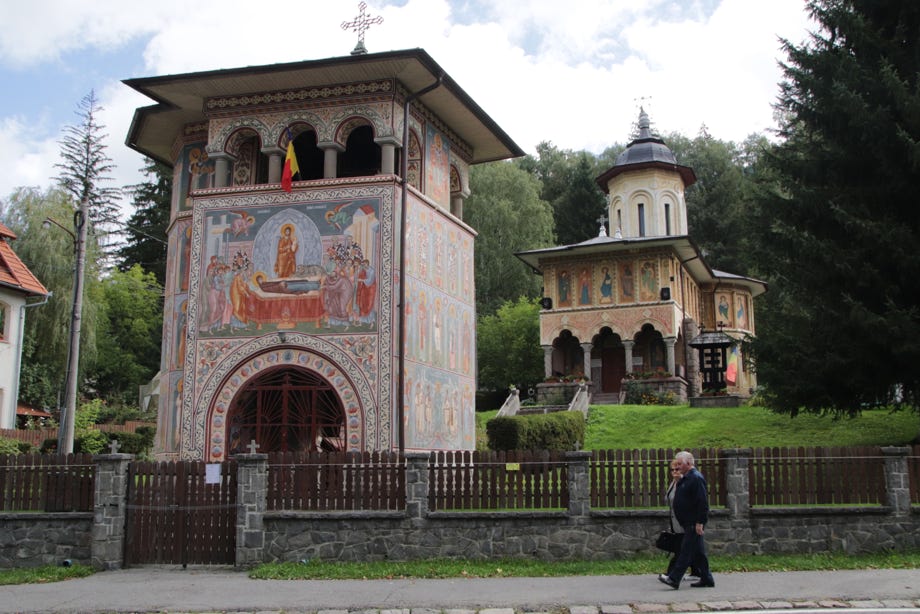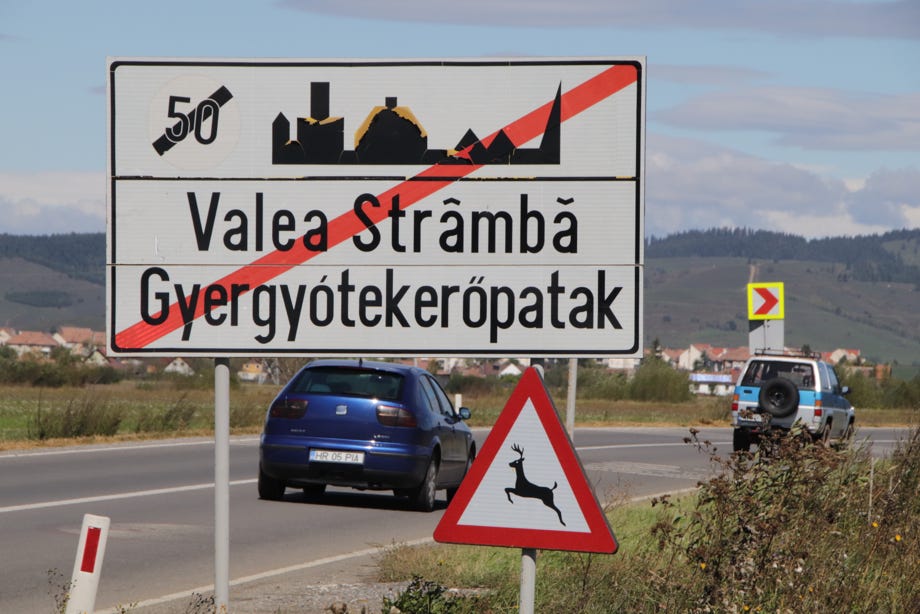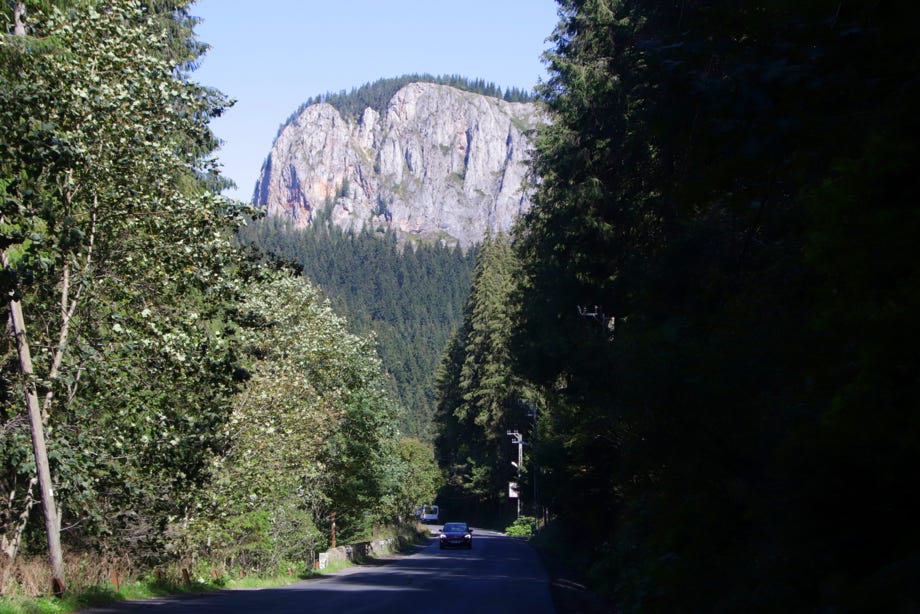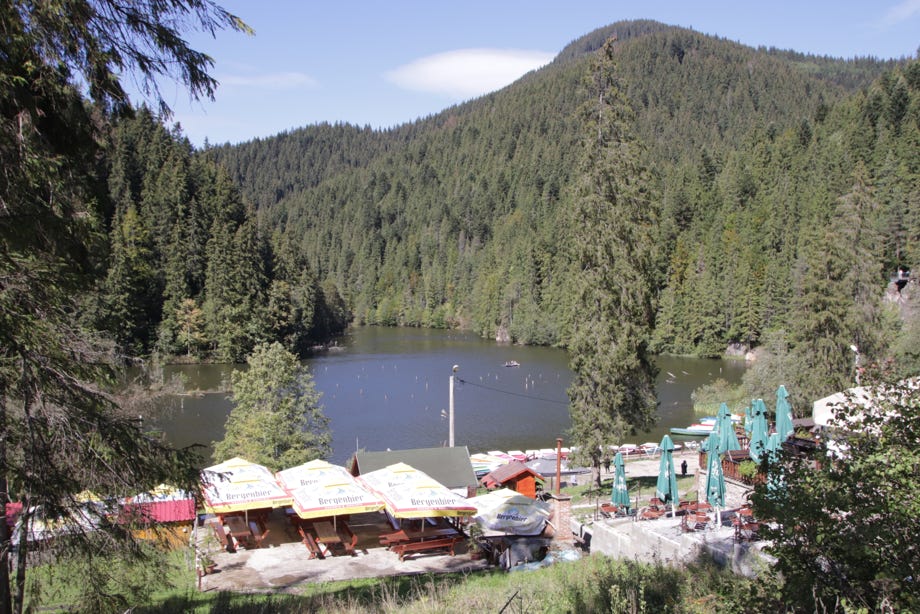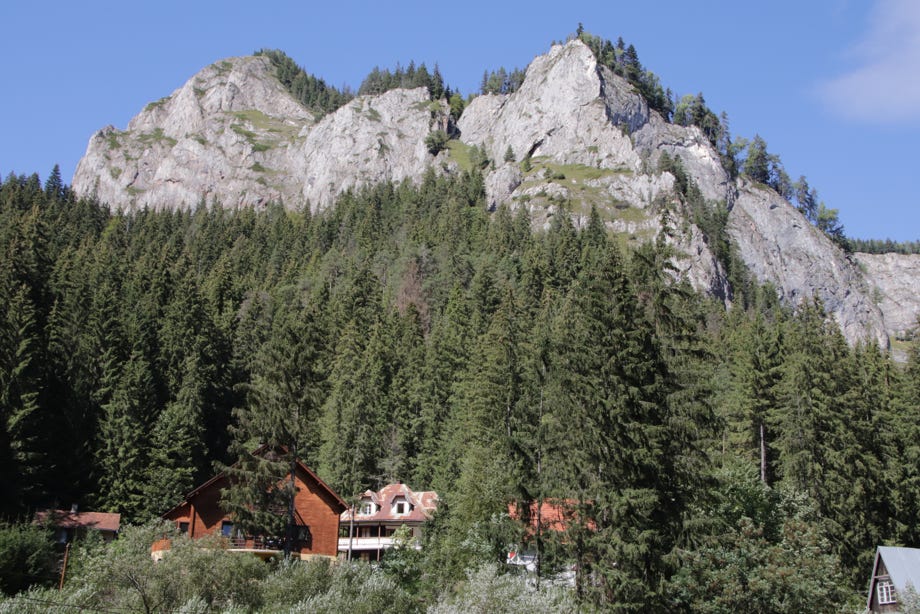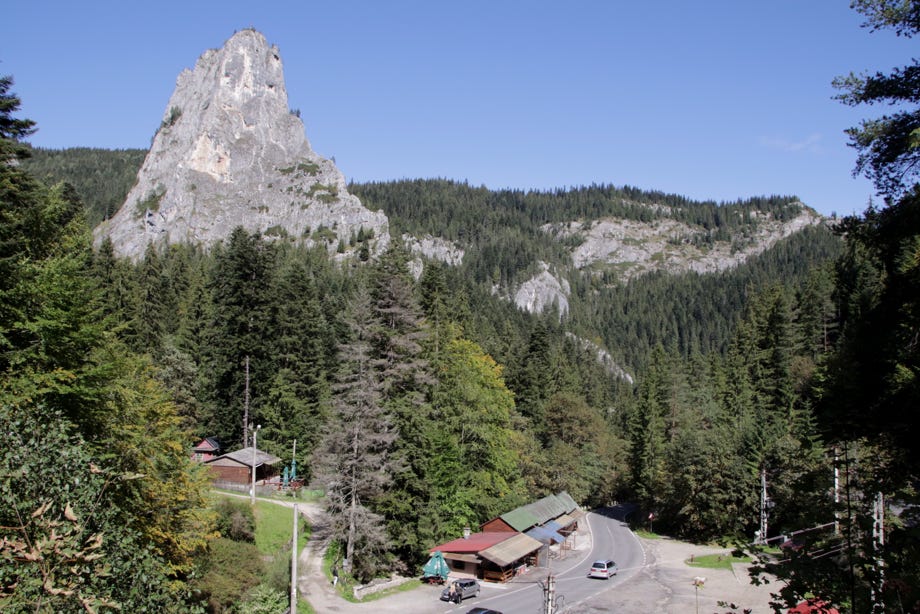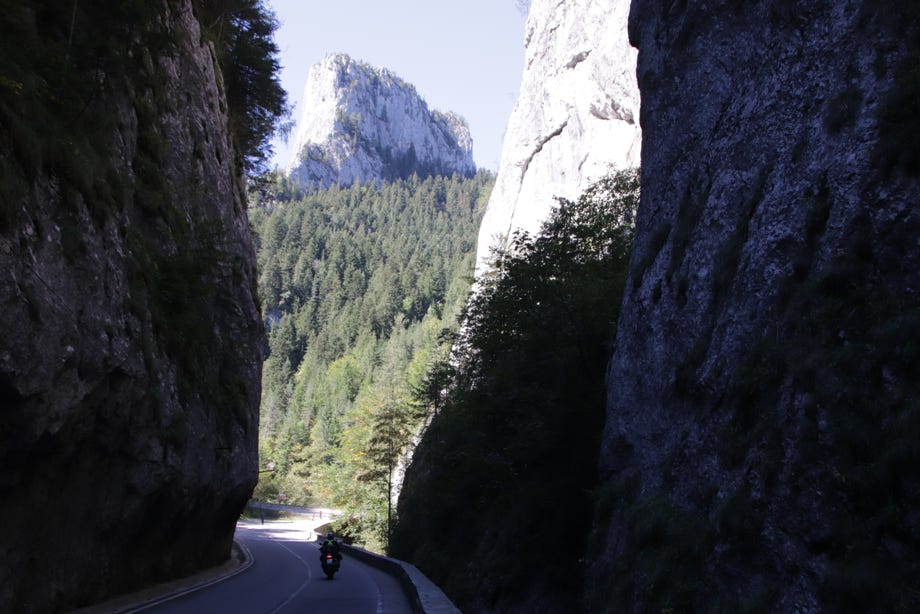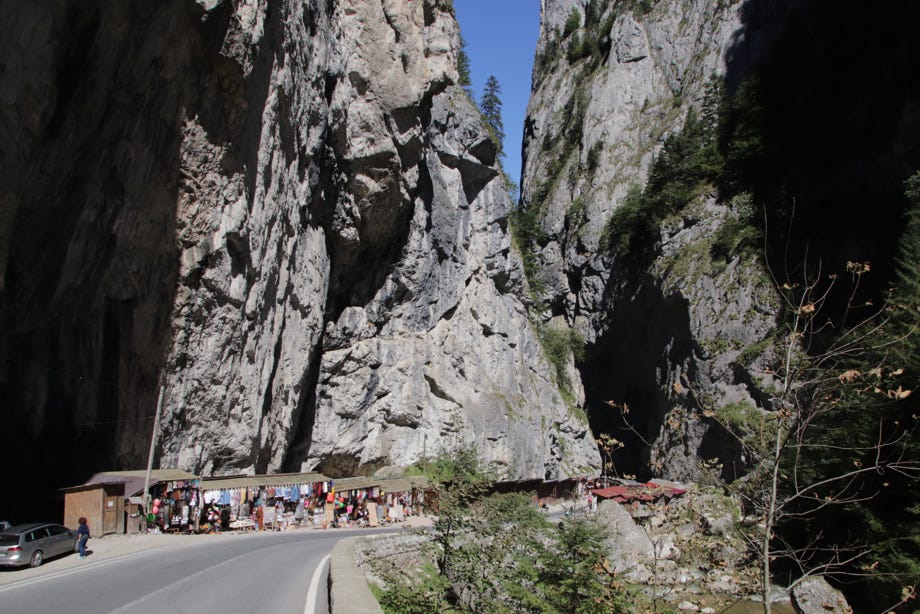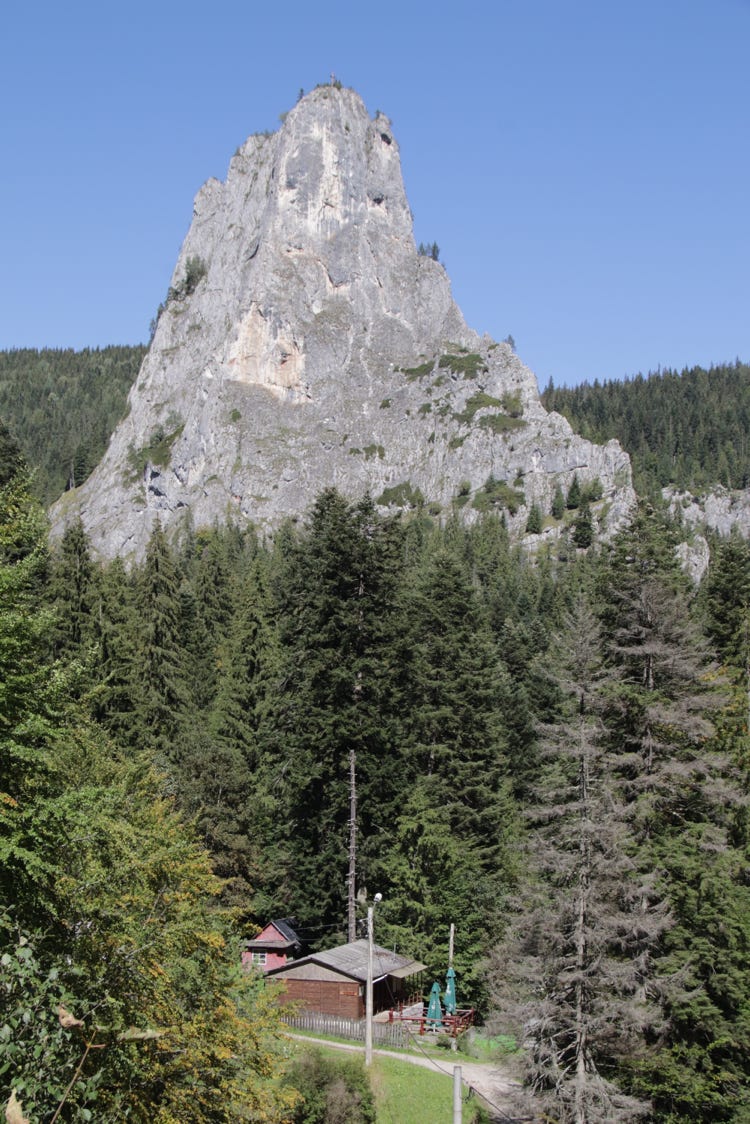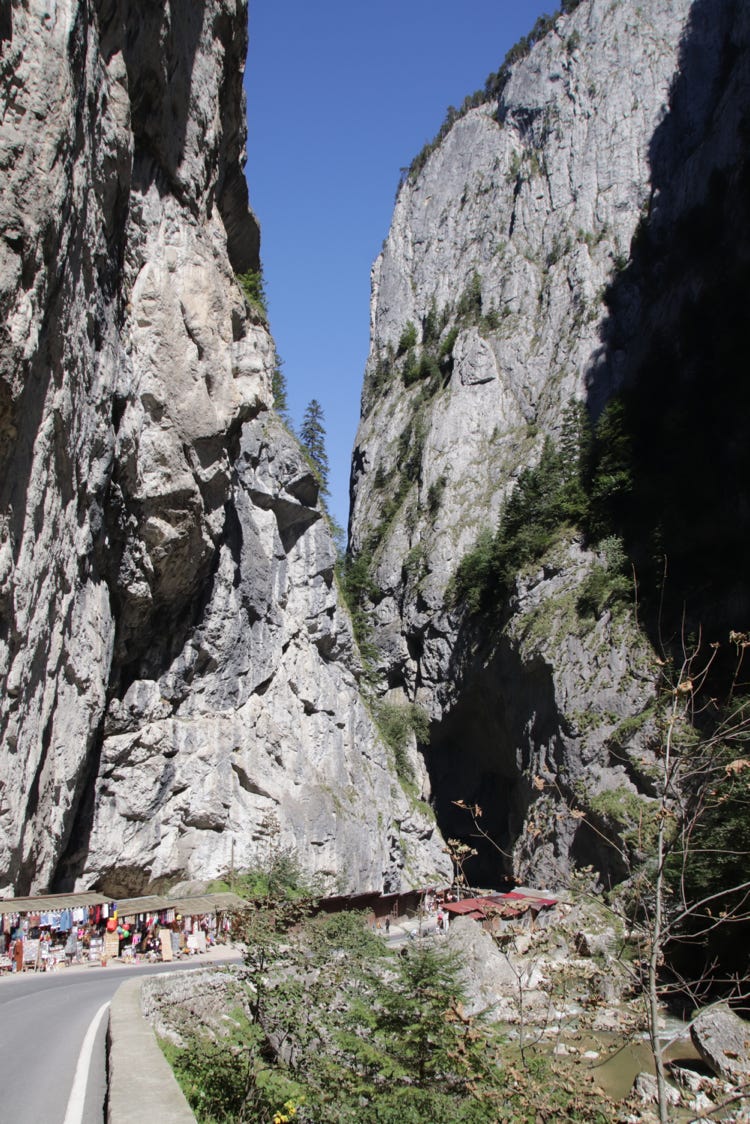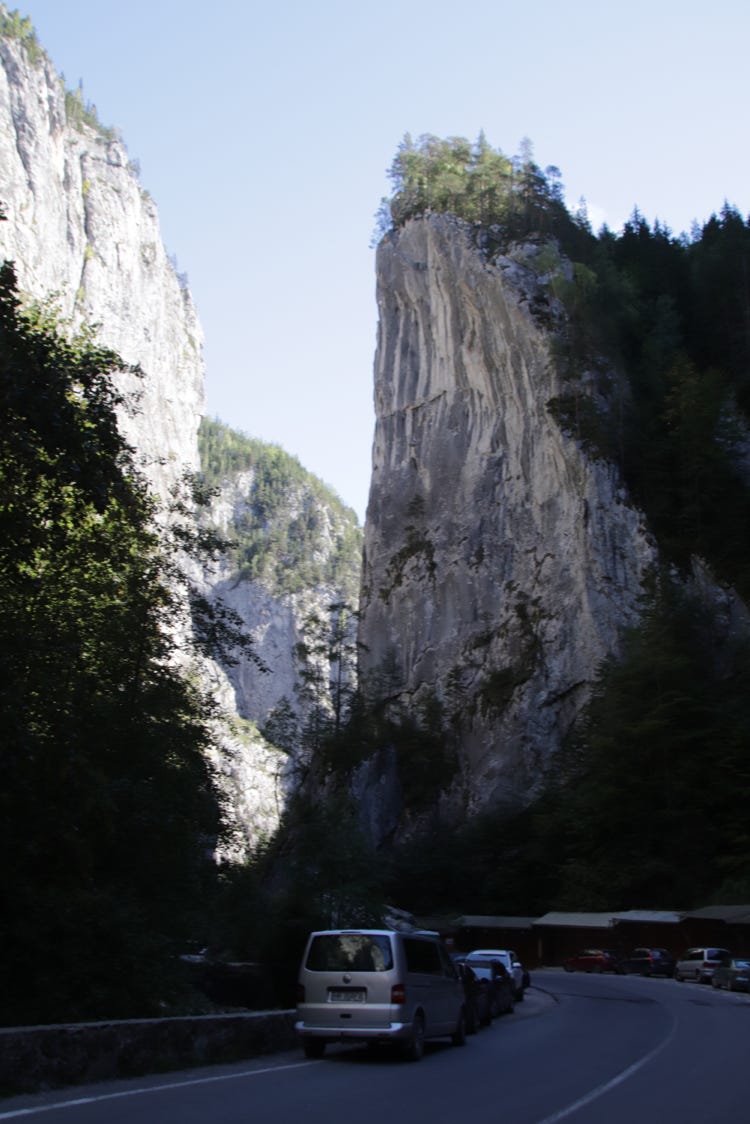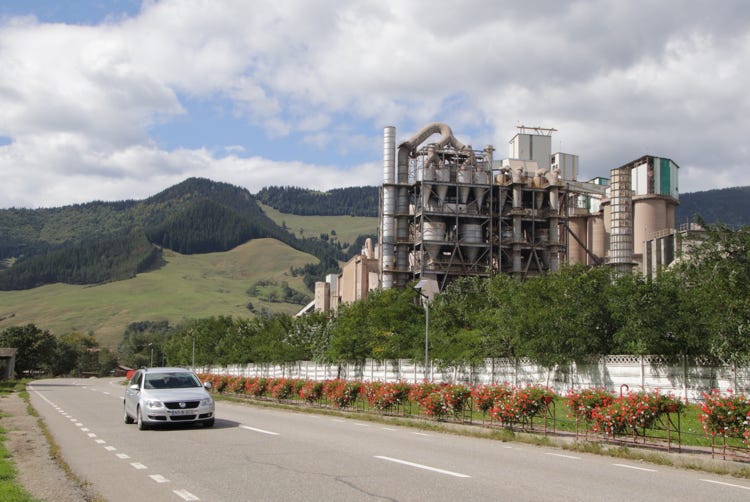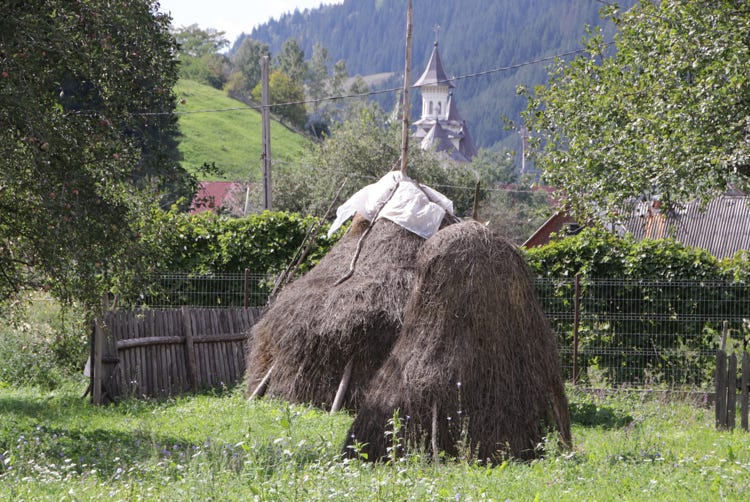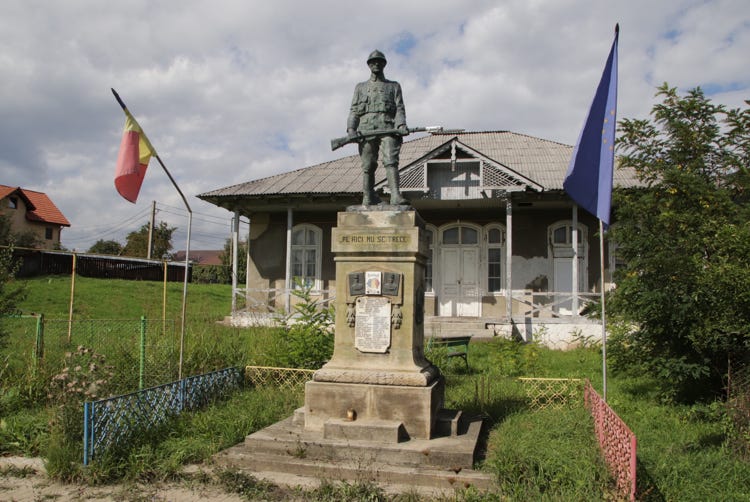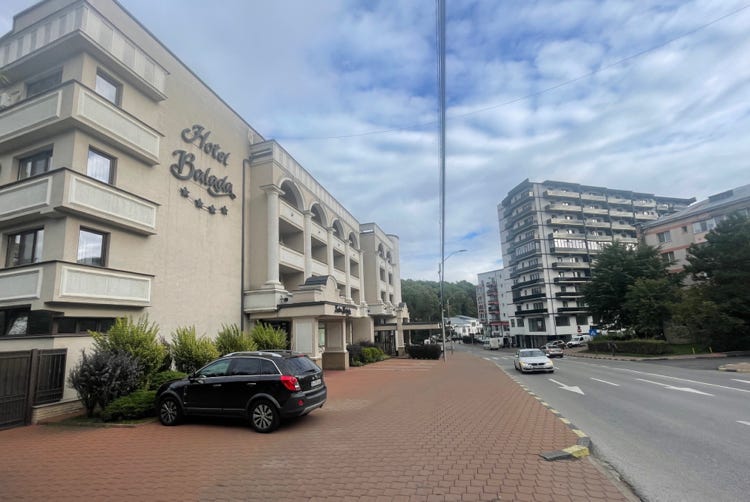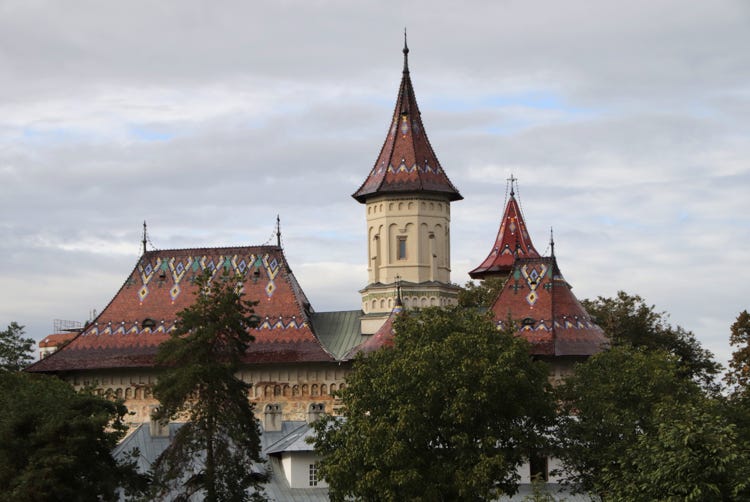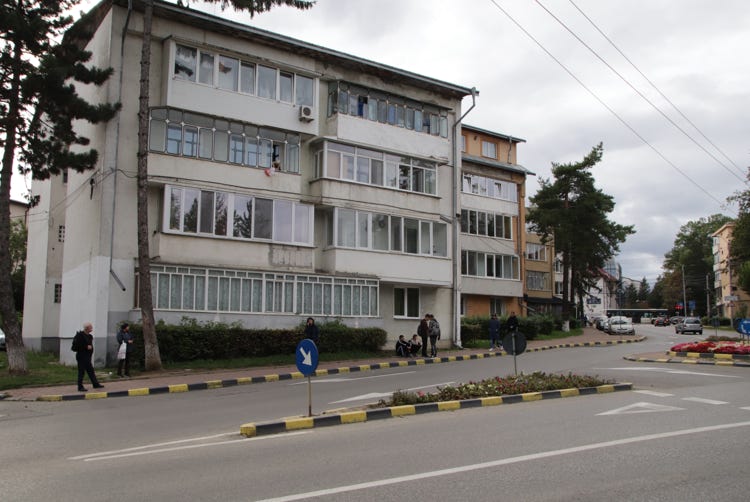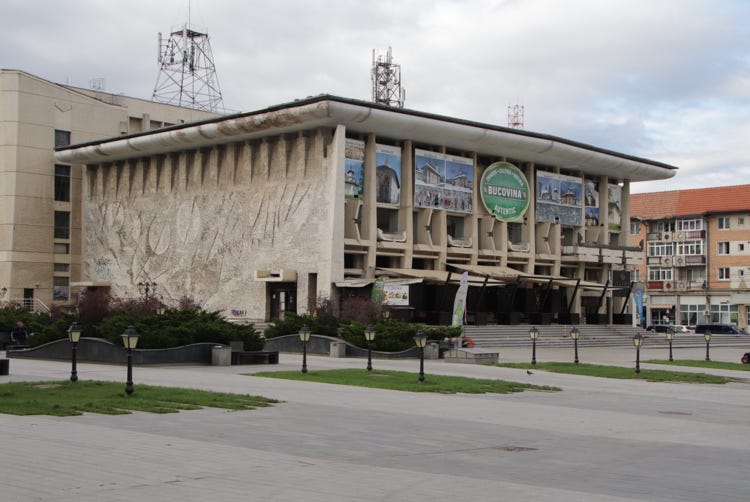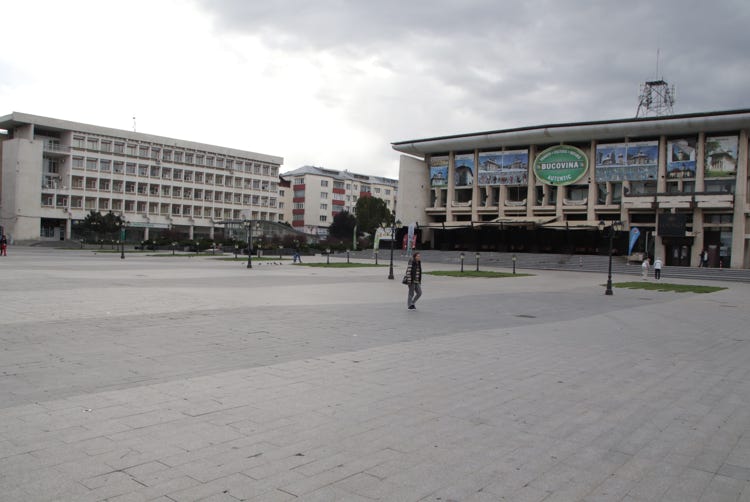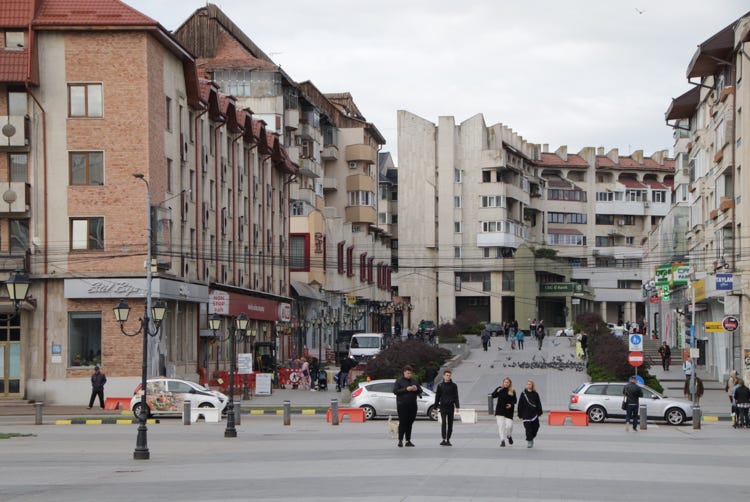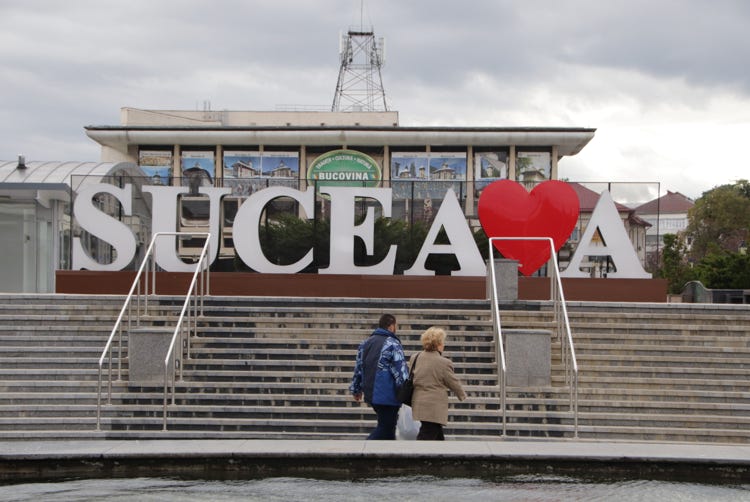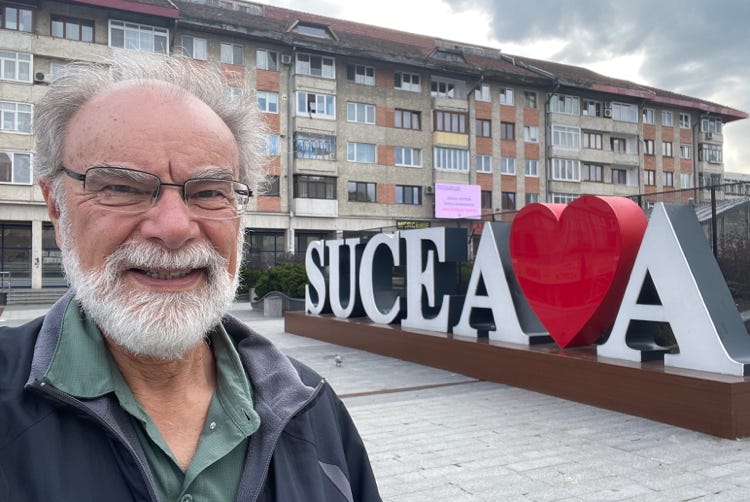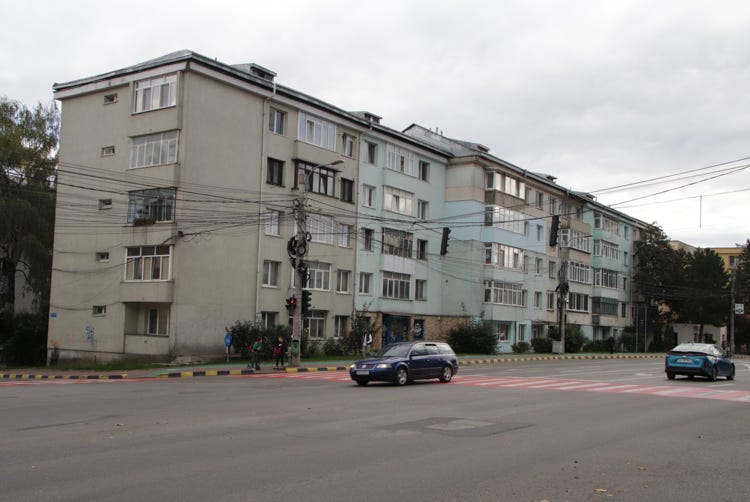
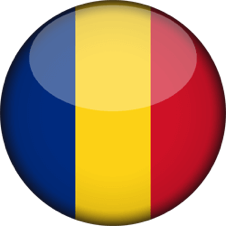
Braşov to Suceava

Distance travelled = 340 kilometres driving by road and 6.2 kilometres walking (8,300 steps).
If someone chose to drive directly from Braşov to Suceava without stopping, it would typically take about five and a quarter hours to cover the 322 kilometres. I chose not to take the direct route, instead taking the slightly longer route through the spectacular Bicaz Gorges (Cheile Bicazului). The day’s drive took me seven and a quarter hours, with most of the extra two hours caused by making lots of stops to admire the scenery.
I set off from Braşov at about 9:15am in light rain. After topping up the car’s fuel tank, I drove north through pleasant but unspectacular farming country without stopping until I turned through a left hand curve coming into the spa village of Băile Tuşnad and saw a stunning painted Catholic Church right beside the road. I had been wanting to stop and stretch my legs anyway – the seats in my Ford Focus rental car are far from comfortable – and the sight of the church was just what I needed, especially as I had just left the rain behind me. Nestling in the volcanic peaks of the Harghita Mountains, Băile Tuşnad is known as “Transylvania’s Pearl” because of the healing qualities attributed to the waters of its natural springs. Although I felt I could have benefitted from the spa waters, I satisfied myself with some photos of the church and continued on my way.
The road I followed today must have passed through hundreds of small towns and villages; it was not the poor quality of the roads that slowed me down (the roads were actually very good), but the seemingly endless urban speed limits. There was some entertainment value, however, in trying to pronounce some of the village names – it seemed that the size of the villages was inversely proportional to the length of its name: small village = long, unpronounceable name.
I continued driving northwards along the E578 highway until I reached the town of Gheorgheni (which you might know by its alternative name, Gyergyószentmiklós) where I turned right onto Route 12C, the road that crosses the Hășmaș Mountains through the Bicaz Gorges (Cheile Bicazului). Amazingly, and contrary to the weather forecast, the clouds cleared and the sun shone brightly as I approached the canyons, and remained that way until I emerged at the eastern end.
To say the drive was spectacular would be an understatement. The Hășmaș Mountains are made of limestone, and the river has cut steep (in places, vertical) cliffs that rise about 300 metres on either side of the narrow valley – the road follows the river as it traverses the narrowest passes through the mountains. Getting photos was a challenge because the road is so narrow that there are very few places to stop. However, some enterprising souvenir sellers have set up stalls in a few spots, with some spots for parking of course. The views were breathtaking, and I felt especially fortunate that the sky was so blue and the air was so clear at the time I traversed the gorges. I had set off this morning thinking “given a choice between seeing the gorges in rain or not seeing them at all, of course I would want to see them in the rain”. What I experienced was an order of magnitude better than I was expecting. Unfortunately, the photos can’t do justice to the massive scale of the landscape I experienced today, but hopefully they give you some idea of this magnificent, spectacular landscape.
As I emerged at the eastern end of the Bicaz Gorges, I encountered something that was very familiar to me from my travels in Romania in 1987. In his attempt to develop heavy industry, Ceauşescu’s government had established huge, smoke-belching factories, often in areas of outstanding scenic beauty. And with those memories flooding back to me, I came across the huge Heidelberg Cement Factory in Taşca as I emerged at the eastern end of the Gorges. Actually, it wasn’t a full déjà-vu of my experiences during the Ceauşescu era as there was no billowing plume of dirty black smoke that was so familiar 1987, and I don’t recall Ceauşescu’s factories lining the roads beside them with pretty flowers like this one had done.
I made one more stop (to the relief of my legs and back) on today’s drive, stopping for a few minutes in Bistriţa to photograph one of the better war memorials I had seen today. The timing was fortuitous as the sun disappeared as I drove away and steady rain began to fall, lasting a little over half an hour.
It was still grey, dull and overcast as I arrived at my hotel in Suceava at about 4:45pm, completing my drive from Transylvania to Moldavia (not to be confused with the separate nation of Moldova just across the border from Romania’s Moldavia). Suceava is the second largest city in Moldavia, but I am quite sure no-one chooses to live here because of its beautiful architecture – simply because I don’t think it has any.
Actually, that may be unfair. The view from my room looks across to the roof of the Monastery of St John the New. The monastery is not open to the public, and it is actually quite difficult to see from the street, so perhaps I have the best view in the whole city, most of which consists of run-down high-rise housing blocks that seem to have received little attention since the 1989 uprising.
My hotel is the Balada Hotel, renovated in 2016. I chose it because of its central location, its free parking, free wi-fi, and good online reviews of the quality of its included breakfasts. Having checked in to the hotel, I braved the cold wind and chilly temperature (about 12°C – quite an abrupt change from Bucharest’s 30°C three days ago) and took a short walk to the city centre in search of urban elegance that seemed to have eluded me as I drove into the city.
I walked through Central Park, which was dark and windy, to Piaţa 22 Decembrie, the city’s large open central square named after the date of the uprising that overthrew Nicolae Ceauşescu. It is difficult to imagine a more sterile, unimaginative city centre than Piaţa 22 Decembrie, which is a paved area almost devoid of people encircled on three sides by socialist high-rise buildings with a Communist-era theatre on the fourth side, its façade horribly defaced by a massive advertisement for beer. There was one gesture towards some lively fun – a large sign saying Suceava with a red heart for the “v”. Maybe it was the grey skies overhead and the cold wind, but I felt Piaţa 22 Decembrie needed more than a red heart to give some life to the area.
I explored several of the side streets around the square in the hope of finding some more appealing landscapes, but there weren’t any – at least, none that I could find. Fortunately, I didn’t come to Suceava for its architectural merits, but rather to use the city as a base for exploring the painted monasteries of Bucovina.
That is the plan for tomorrow.

